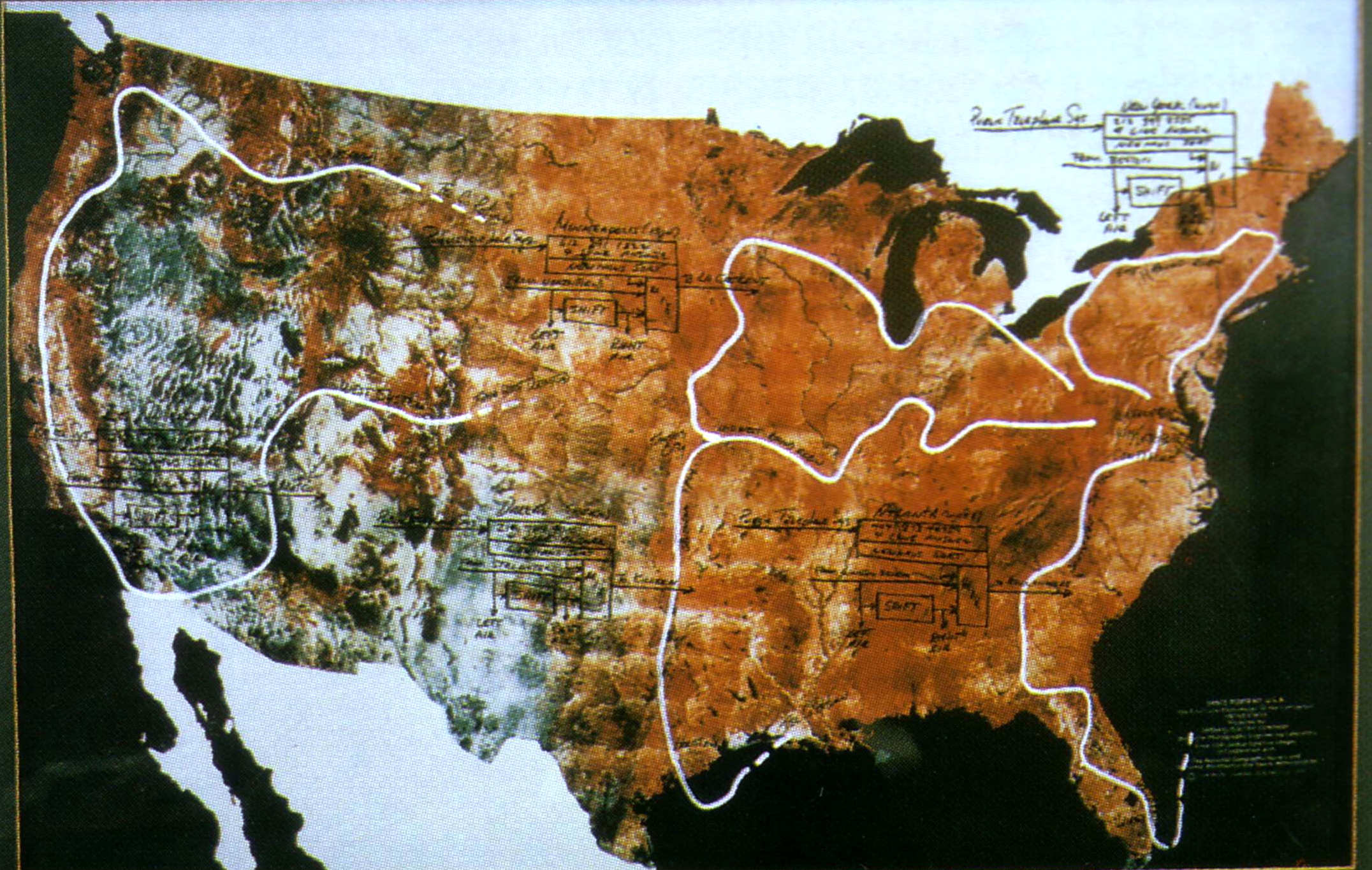1966

Image: Max Neuhaus, Poster Public Supply I, Oct. 8th 1966© Copyright The Estate of Max Neuhaus
_____
'I consider the Public Supplys and the other Networks as direct extensions of my activities in music.'
Max Neuhaus
Public Supply combined a radio station with the telephone network to create what we now call a virtual space.
Work Dimensions: 20 miles in diameter Extant: October 8, 1966 8:30 - 10:00 PM
* * *
Although I was not able to articulate it in 1966, now, after having worked with this idea for a long time and talked about it and thought about it; it seems that what these works are really about is proposing to reinstate a kind of music which we have forgotten about and which is perhaps is the original of the impulse for music in man. Not making a musical product to be listened to, but forming a dialogue, a dialogue without language, a sound dialogue.
The networks propose the regeneration of a form of music which wehave almost lost and which I
Public Supply in 1966 combined a radio station with the telephone network and created what we now call a virtual space -- a two-way public aural space twenty miles in diameter encompassing New York City. Any inhabitant could join a live dialogue with sound by making a phone call.
Radio and telephone both may seem like rather primitive technologies in this digital age at the end of the twentieth century, but in fact they are still the most widely used forms of live communication technologies we have and will remain so for a long time to come. He has continued his activities in music with his broadcast works: virtual architectures which act as a forums open to anyone for the evolution of new musics. With the first Public Supply in 1966 he combined a radio station with the telephone network and created a two-way public aural space twenty miles in diameter encompassing New York City where any inhabitant could join a live dialogue with sound by making a phone call. Later with Radio Net he formed a nationwide network with 190 radio stations. The current project, Audium, proposes a 24-hour global entity for live interaction with sound.
Max Neuhaus

Image: Sound Paths, Radio Net, 1977 Paint on cibachrome print 60 x 120 cm Collection: The Estate of Max Neuhaus
Sound work references: Radio Net, 1977, National Public Radio Network, USA
RADIO NET by Max Neuhaus, 1977
Some of Neuhaus' earliest drawings, these working drawings were used in the realization of his nationwide Network, 'Radio Net' in 1977
____
Radio and telephone both may seem like rather primitive technologies in this digital age at the end of the twentieth century, but in fact they are the most widely used forms of live communication technologies we have and will remain so for a long time to come.
The telephone forms a two way virtual space in the aural dimension: we function in it aurally as if we were in one real space, but this space doesn't exist. The radio on the other hand can give us a live ear view into a space which can be anywhere or nowhere -- it can also be completely artificial.
If we combine the public telephone network and radio broadcast, we can make a virtual aural space in which a large number of people can be at the same time.
This is what I did with Public Supply I.
Max Neuhaus, Oct 16, 1997

IMGP2510.JPG
Max Neuhaus Drawing
WBAI New York - Broadcast Work, 1982 - Ink and colored pencil on paper - 68 x 117 cm
Sound work references: Public Supply II, 1966
Drawing Networks pubished in:
The drawing describes the first work in 1966. It represents the aural space which was formed by a radio broadcast covering one thousand two hundred square miles of the New York Metropolitan area, and its telephone network. The work was initiated by advertising a phone number and a broadcast time. It was also necessary to explain that their calls would be put on the air, as this was well before the time when the format of a radio phone-in program was practiced.
People entered the space through a game of chance. There were many more callers than incoming lines. A caller was able to enter if his call coincided with the exit of another person (callers were limited to a maximum of three minutes each.) I listened to each person and joined them into broadcast groups which were then put on the air together. While they were on the air I acted as a balancer or moderator of the group by adjusting the way their sounds were mixed together. I re- proportioned them according to what each person was doing, as a way of developing activity within the group -- a way of getting them to listen to what they were doing and what others in the group were doing.
Max Neuhaus

Image: Max Neuhaus Drawing, Three drawings showing the structure of the first Networks. © Copyright The Estate of Max Neuhaus.
Published in: Zeitgleich, The Symposium, The seminar, The exhibition, Transit, Kunstahalle Tirol. [English, German] (Vien: Triton, 1994

Texts NETWORKS by Max Neuhaus:
The Networks - The Broadcast Works and Audium Model by Max Neuhaus, 1991
AUDIUM by Max Neuhaus, text 1991
THE BROADCAST WORKS AND AUDIUM by Max Neuhaus. Text published in Zeitgleich 1994.
AUDIUM MODEL by Max Neuhaus, 1994
NETWORKS by Max Neuhaus (Test 2004)
Text Others:
Drive in Music and Public Supply: Chapter 10
Anne Zeitz, De Max-Feed à Radio Net Les projects radio de Max Neuhaus, Avril 2014
